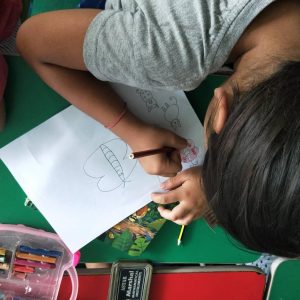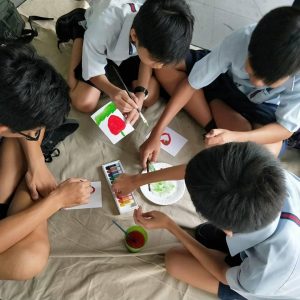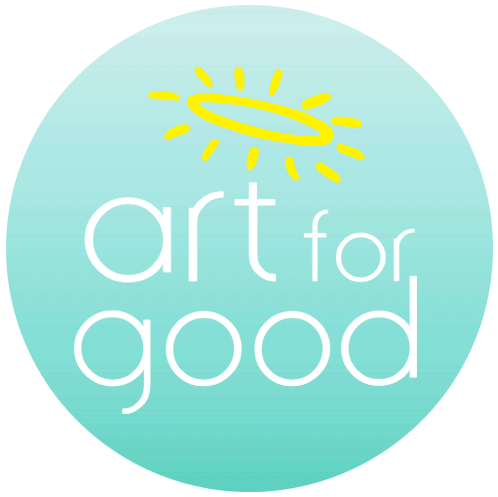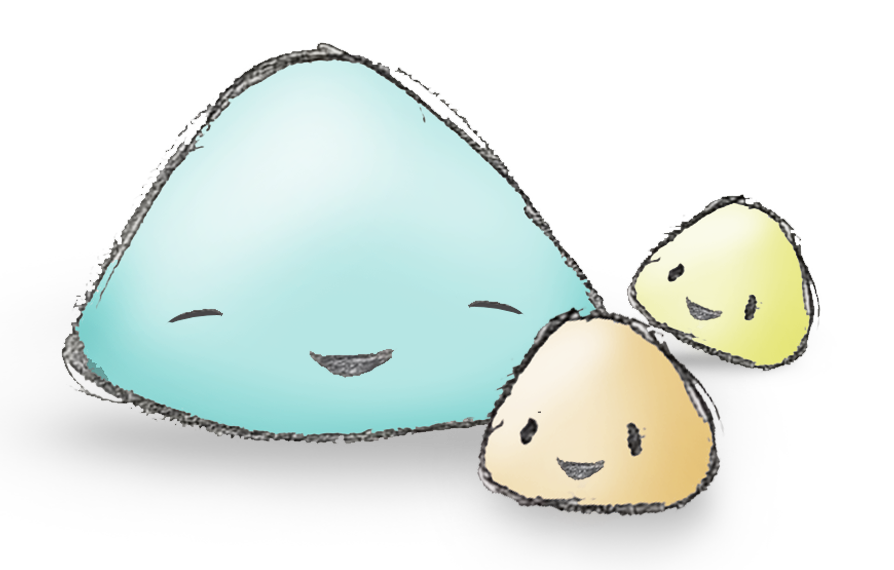Art Therapy
You may have heard of the term “art therapy” and wondered what it meant? Or perhaps watched a movie or television show where you saw therapists encouraging a child to express his or her emotions by drawing. How does it work? And does it work? Certified art therapist Amanda Chen shares her insights with us.”



Art Therapy is a human service profession that uses art media, images, art processes and client responses to the created products, as reflections of development, abilities, personality, interests, concerns & conflicts. The art therapy practice is based on human developmental and psychological theories for assessment and treatment, which include educational psychodynamic, cognitive and other therapeutic means of reconciling emotional conflicts, fostering self-awareness, developing social skills, managing behaviour, solving problems, reducing anxiety, aiding reality orientation and increasing self-expression to explore problems using a range of art materials, enabling positive change and personal growth. The intention is not a focus on the artistic skills but in engaging in a creative personal process.
As art therapy encourages self-expression towards self-explorations through art, this encourages positive change and personal growth. The intention is not a focus on the artistic skills but the creative personal process. Through the process, the clients can become more aware of where they are at and learn to take care of their mental health and state. Art therapy also promotes self care, where you are taking the time to look inwardly at yourself and focus on you.
Art therapy usually comprises of visual arts. Arts (with an ‘s’) Therapy covers more areas to include movement, dance and music within the treatment and practice. For very specialised therapies, you have music therapy, expressive arts therapy and play therapy. Most importantly, an art therapist would be needed in an art therapy session, because without the therapist it would simply just be art making. The therapist helps the client to process and make sense of the artwork and the emotions derived from the art making process and the art work. The treatment is usually built on the therapeutic relationship and alliance that is build over the art therapy sessions.
Art materials supporting the art therapy session, would be in the disciplines that the art therapist is familiar with. The basic art materials to start with would be pencils and paper. More rt materials provided can allow the client to become more expressive in their art. The art materials will vary from client to client, dependent on the interventions and desired outcomes for the client.
How does art therapy help? Pearl, aged eight, a quiet shy girl with low confidence, was not good at expressing herself with words and is socially awkward. She comes from a low-income family, where the brother was more favoured as he was a male child in a traditional Chinese family. After having gone through 12 sessions of art therapy, she was empowered through her expression through art, where she managed to find a voice. She began to find her sense of self, increase her confidence and come to terms with her difficult emotions. She became more vocal and now expresses herself better. She even started to join in for events and activities at the centre, made new friends and volunteered to join in a dance performance.
Meanwhile, Adeline aged 13, started acting out when she went into Secondary One. She was lying, playing truant and was even caught stealing. Her mother wanted to send her to a girls’ home as her behaviour seemed to be getting out of hand. Fortunately, through art therapy sessions, she managed to build confidence in herself, find a surer footing and we all began to see her behaviour starting to improve. She needed to get settled in to the many transitions that were taking place in her life, especially at home and at her new school, where she really needed a space to properly manage her emotions. Art therapy provided her with a safe space to explore these difficult emotions and express herself through her art and words.
Amanda Chen
Founder – Art Therapist
Amanda is a certified and experienced Art Therapist (MA-AT 2015 Masters in Art Therapy) and Arts Educator (Registered with MOE-AMIS). She is active and current in the social work scene for the past decade and has worked for many charities and social enterprises like Red Pencil, Children’s Wishing Well, Center Pottery, Habitat for Humanity Singapore and was the Former Deputy Director of Social Creatives. She currently sits on the board as Honorary Secretary of the Rare Disorders Society of Singapore. Amanda is currently an Art Therapist with the Red Pencil and manages all the projects and programs under Art for Good.
Art For Good is a social enterprise which creates good through art. We help communities through art therapy, art enrichment and community art projects. Our beneficiaries are vulnerable children, those in poverty, with special needs, suffer from rare disorders & emotional / behavioural problems.
Art For Good is based on a simple philosophy of using art to do good. We focus on three different levels of which we use art for good, namely Art Therapy (healing), Art Enrichment (learning) & Community Art Projects (giving).
OVER-THE-RAINBOW’S WEBSITE : HTTP://OVERTHERAINBOW.SG/
OVER-THE-RAINBOW’S FACEBOOK PAGE : HTTPS://M.FACEBOOK.COM/OVERTHERAINBOW.SG/


 Amanda Chen
Amanda Chen